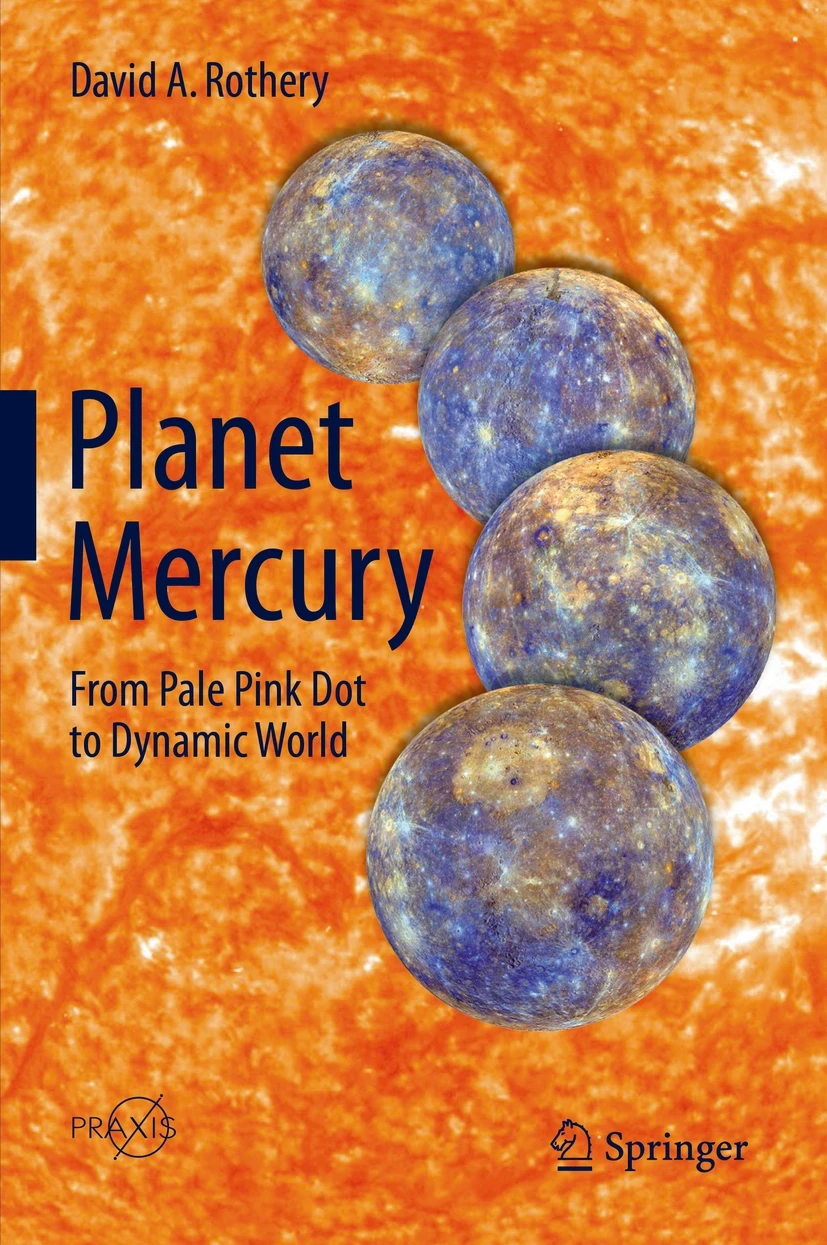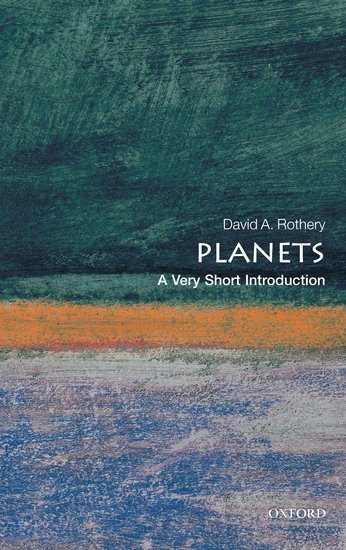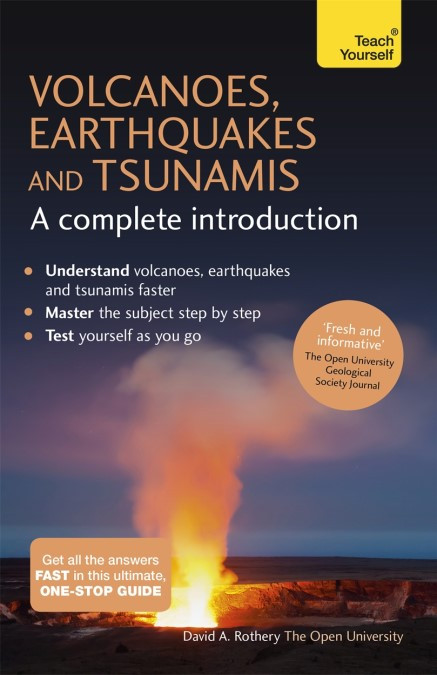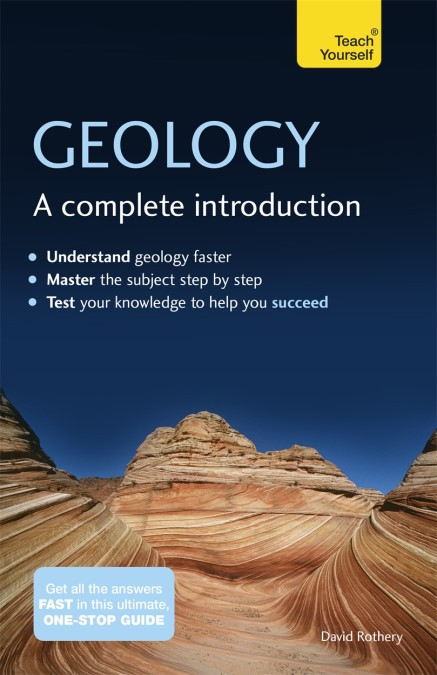
Prf David Rothery
Professor Of Planetary Geosciences
Biography
Professional biography
Within the Open University School of Physical Sciences I became Head of Research Discipline (rebranded as Research Area Lead in 2023) for Planetary & Space Sciences in 2020, and was a postgradiate research tutor (PGRT) Dec 2019- Dec 2024. I became Professor of Planetary Geosciences in November 2013. I was a Senior Lecturer in the Open University Department of Earth Sciences since 1994 (transferring to the Planetary & Space Sciences Division of the new Dept of Physical Sciences in August 2011), and before that was a Lecturer here. During 1999-2004 I was Director of Teaching and Geosciences Programme Director. I have also been Leader of the IAVCEI Commission on Remote Sensing, and in 2005 I was appointed to the PPARC Solar System Advisory Panel and the BepiColombo Oversight Committee.
In May 2006 I was appointed UK Lead Scientist (now lead Co-I for geology) on MIXS (Mercury Imaging X-ray Spectrometer), which is the only UK Principal Investigator instrument on BepiColombo, the European Space Agency mission to Mercury to be launched in 2018. I became MIXS Lead Co-Investigator in 2014. I co-lead ESA's Mercury Surface and Composition Working Group. From March 2018 I led the geological mapping workpackage for a four year Horizon 2020 Planmap project, to improve European capabiliy in planetary geologic mapping. From October 2025 onwards I will be leading the OU element of a 5 year STFC 'Astronomy Large Award' Planet Mercury: Origin, Evolution, And Interactions.
My research interests centre on volcanology and geoscience in general on other planets. Previously I was active in the study of volcanic activity by means of remote sensing.
Research interests
Characterizing planetary surfaces, remote sensing of volcanic activity
I am UK Lead Co-Investigator on the Mercury Imaging X-ray Spectrometer, and co-chair of ESA's Mercury Surface & Composition working group.
I lead the Open University aspect of Planet Mercury: Origin, Evolution, and Interactions, a 5 year STFC large award 2025-2030.
Teaching interests
Planetary science, volcanology, general geology.
I chair the level 2 Planetary Science module S283, and chaired the level 1 short module Volcanoes, Earthquakes and Tsunamis (S186) until it was sadly retired in 2020. I was Educator on the Open University/FutureLearn Moons MOOC until its final presentation in 2023.
I recently wrote for S309 'Earth Processes', S111 'Questions in science', and SXPS288 'Remote experiments in physics and space', and am currently on the productuon team for S229 'Geology' (60pt, which might be obliged to change its title to someting more trendy) and S287 (the new 30 pt planetary scoece module).
Impact and engagement
For videos and other materials about Mercury that I (and others) prepared to help public understanding of Mercury, the BepiColombo mission to Mercury, and transits of Mercury across the Sun, see here.
Here are two videos of me lecturing about Mercury in 2015: a schools lecture and a Royal Astronomical Society public lecture.
I spoke about Mercury and the BepiColombo mission at TEDx London on 1 July 2018; the video can be seen here. I also spoke at TEDx St Andrews University in March 2025.
My OU 'Inaugural lecture' about Mercury (12 Nov 2019) can be seen here.
My talk in the Geological Society's Year of Space series, delivered online on 3 March 2021, can be seen here.
On BlueSky I am @daverothery.bsky.social
My largely defunct Twitter feed is https://twitter.com/daverothery
I have written several books, which you can find in my publications list. Here are some of the more recent ones.

More information on this book is here

More information on ths book here

More information on this book here

More information on this book here This new edition was published in late 2015.

More information in this book here This edition was published in mid 2015.
International links
Co-leader of ESA's Mercury Surface & Composition working group for the BepiColombo mission to Mercury.
Projects
Planet Mercury: Origin, Evolution, and Interactions
Astronomy Large Awards The ESA/JAXA BepiColombo (Bepi) mission to Mercury offers a unique opportunity to propose an ambitious, strategically relevant, planetary science programme of work, combining a variety of datasets and expertise.
Wet, moist, or dry? Using digital terrain models to determine the amount of water that has shaped the surfaces of Earth, Mars and the Moon. (SE-10-183-MB)
The project reflects the vision of the proposer in that it puts observation at the forefront of planetary science and is focussed on the role of liquid water in shaping landscapes on Mars. By applying new terrain analysis techniques it also reflects the applicant’s vision in attempting to circumvent the age-old planetary science problem of “convergence of form” (i.e. where different landforms can look the same, but were actually formed by very different processes) which, in the absence of field data, can cause significant confusion. The proposed work is novel as our is the first group to seriously apply these terrain analysis techniques to bodies other than the Earth
BepiColombo Mercury Imaging X-ray Spectrometer UK Lead Scientist
BepiColombo Mercury Imaging X-ray Spectrometer UK Lead Scientist
Planetary Science Consolidated Grant 2020-2023
STFC Planetary Science Consolidated grant - details to be entered here.
PLANnetary MAPping
Improved procedures for making and presenting geological maps of planetary bodies targeted by space missions having European involvement.
STFC DTG 2015 - 2016 (2015 Intake)
STFC DTG Quota 2015-16 AMS record for students starting on or after 01/10/2015
Daphne Jackson fellowship for Anne Jay
To understand the 3D architecture (how the volcanic units fit together) and hence the evolution of the largest volcanic landscapes on Earth: Continental Flood Basalt Provinces (CFBPs). The Deccan CFBP, India, will be the focus of the study; what is learned from the Deccan can be applied to other CFBPs. Dr Jay aims to understand both the Deccan as a whole, and also whether specific regions can tell us about eruption rates and volumes and from this their role in sudden climate change. To do this she will create a 3D map of the Deccan using ArcGIS and include published data and data that she collected during her PhD.
Astronomy and Planetary Sciences at the Open University
The aim of our programme in Astronomy & Planetary Science at the Open University (APSOU) is to carryout detailed investigations of the origin and evolution of galaxies, stars and planets with a special emphasis on our own Solar System through a combination of observation, simulation, laboratory analysis and theoretical modelling. Our research is divided into two broad areas, reflecting the historical research strengths. This research programme is well-matched to both nationally- and internationally-agreed research imperatives. In its final report, A Science Vision for European Astronomy2, Astronet’s Science Working Group identified four broad areas of strategic importance; our research covers major topics within each of these areas. APSOU projects also map onto two of the four Science Challenges that form STFC’s Road Map3 for science (‘How did the universe begin and how is it evolving?’ and ‘How do stars and planetary systems develop and is life unique to our planet?’). The present APSOU programme comprises 20 projects (labelled A to T), of which 6 are for consideration by the Astronomy Observation (AO) panel, 1 for Astronomy Theory (AT), and 13 for the Planetary Studies (PL) panel. The AO projects cover the breadth of the 7 themes recognised as UK strengths in the report of STFC’s Astronomy Advisory Panel (AAP), whilst the 13 PL projects are directed towards answering questions raised in two of the three themes identified as UK strengths in the roadmap of STFC’s Solar System Advisory Panel (SSAP)4.
Bridging funds for MIXS lead Co-Investigator
BepiColombo is the European Space Agency's mission to Mercury, expected to begin orbiting the planet in 2024. It is a highly-capable pair of spacecraft, equipped with a UK-led X-ray imager (MIXS) that will give much-needed compositional data. MIXS has now been delivered to ESA, and this award fills a one-year gap between the end of my support from the UK Space Agency and the opportunity to secure longer-term support for my role on the BepoColombo team from STFC via my Department's next Consolidated Grant proposal.
Publications
Book
Moons: A Very Short Introduction (2015)
Planet Mercury - from Pale Pink Dot to Dynamic World (2015)
Planets: A Very Short Introduction (2010)
Geology: the Key Ideas (4th ed.) (2010)
Volcanoes, Earthquakes and Tsunamis (2010)
Geological Field Techniques (2010)
Book Chapter
Digital Artefact
Journal Article
Geology of the Bach quadrangle (H15), Mercury (2025)
The Timing and Origin of Lobate Ejecta Forms at Craters in Mercury's South Polar Region (2025)
Geology of the Michelangelo quadrangle (H12), Mercury (2025)
Planetary Geologic Maps: Essential Tools for Scientific Inquiry and Space Exploration (2024)
Widespread small grabens consistent with recent tectonism on Mercury (2023)
Geology of the Neruda quadrangle (H13), Mercury (2023)
Map of tectonic shortening structures in Chryse Planitia and Arabia Terra, Mars (2023)
Geology of the Derain quadrangle (H10), Mercury (2023)
Spectral units analysis of quadrangle H05‐Hokusai on Mercury (2022)
Explosive vent sites on mercury: Commonplace multiple eruptions and their implications (2021)
A Fault Surface Exposed on Mercury (2021)
Asymmetric magnetic anomalies over young impact craters on Mercury (2021)
On the asymmetry of Nathair Facula, Mercury (2021)
Mars: new insights and unresolved questions (2021)
Geology of the Debussy quadrangle (H14), Mercury (2021)
Modification of Caloris ejecta blocks by long-lived mass-wasting: A volatile-driven process? (2020)
Investigating the Neruda-Paramour thrust system, Mercury (2020)
Rationale for BepiColombo Studies of Mercury’s Surface and Composition (2020)
Investigating Mercury’s Environment with the Two-Spacecraft BepiColombo Mission (2020)
Geology of the Hokusai quadrangle (H05), Mercury (2019)
Constructional Volcanic Edifices on Mercury: Candidates and Hypotheses of Formation (2018)
Late movement of basin-edge lobate scarps on Mercury (2017)
Mercury’s Caloris basin: Continuity between the interior and exterior plains (2017)
Mercury's low-reflectance material: Constraints from hollows (2016)
Geology of the Victoria quadrangle (H02), Mercury (2016)
The geological history of Nili Patera, Mars (2015)
Long-lived explosive volcanism on Mercury (2014)
Hollows on Mercury: materials and mechanisms involved in their formation (2014)
The Chandrayaan-1 X-ray Spectrometer: first results (2012)
Beagle Rupes – evidence for a basal decollement of regional extent in Mercury's lithosphere (2010)
Constraints on Mercury’s surface composition from MESSENGER and ground-based spectroscopy (2010)
The mercury imaging X-ray spectrometer (MIXS) on BepiColombo (2010)
Mercury's surface and composition to be studied by BepiColombo (2010)
The C1XS X-Ray Spectrometer on Chandrayaan-1 (2009)
LunarEX: a proposal to cosmic vision (2009)
Impact vesiculation – a new trigger for volcanic bubble growth and degassing (2007)
Strombolian explosive styles and source conditions: insights from thermal (FLIR) video (2007)
Analysis of volcanic activity patterns using MODIS thermal alerts (2005)
Selection of the landing site in Isidis Planitia of Mars probe Beagle 2 (2003)
MODIS thermal alerts in Britain and the North Sea during the first half of 2001 (2003)
Gravity changes and passive SO2 degassing at the Masaya caldera complex, Nicaragua (2003)
Documenting surface magmatic activity at Mount Etna using ATSR remote sensing (2001)
Other
The ubiquity and significance of extensional grabens on Mercury’s lobate scarps (2021)
Presentation / Conference
Mapping and Dip Measurements of Tectonic Shortening Structures in Western Arabia Terra, Mars (2023)
Volcanology Targets for Future Exploration at Mercury (2021)
Extensional Landforms as Evidence for Recent Large-Scale Compressional Tectonism? (2021)
On the asymmetry of Nathair Facula (2020)
Geological mapping of Mawrth Vallis, Mars, by PLANMAP (2020)
Geologic Map of the Hokusai Quadrangle (H05) of Mercury (2020)
Geologic mapping of Mawrth Vallis, Mars (2020)
European Co-ordinated Quadrangle Mapping of Mercury (2020)
Geological mapping of the Neruda Quadrangle (H13) of Mercury (2020)
Geological Mapping of the Neruda Quadrangle (H13), Mercury (2020)
The asymmetry of Nathair Facula: A volcanologic mystery on Mercury (2020)
Geological mapping of Mawrth Vallis, Mars: First look (2020)
Explosive Vents on Mercury: Commonplace Multiple Eruptions and Their Implications (2019)
Potential Identification of sublimation-driven downslope mass movement on Mercury (2018)
Small smooth units (‘young’ lavas?) abutting lobate scarps on Mercury (2018)
1:3M Geological Mapping of the Derain (H-10) Quadrangle of Mercury (2018)
Geological Mapping of the Debussy Quadrangle (H-14) Preliminary Results (2018)
Post-deposition (and ongoing?) modification of Caloris ejecta blocks (2018)
Geological mapping of the Hokusai (H05) quadrangle of Mercury: Status update (2018)
Candidate constructional volcanic edifices on Mercury (2018)
Geological mapping of the Hokusai (H05) quadrangle of Mercury: Status update (2018)
Geological Mapping of the Debussy Quadrangle (H-14) - Preliminary Results (2017)
Geological mapping of the Hokusai (H05) quadrangle of Mercury (2017)
Volcanic shields on Mercury identified at last? (2017)
Late-stage effusive volcanism on Mercury: Evidence from Mansurian impact basins (2017)
Preliminary Results of 1:3 Million Geological Mapping of the Mercury Quadrangle H-10 (Derain) (2017)
Volcanic shields on Mercury identified at last? (2017)
Preliminary findings from geological mapping of the Hokusai (H5) quadrangle of Mercury (2016)
Preliminary observations of Rustaveli basin, Mercury (2016)
Moons: a MOOC and open education resource with games and a microscope (2014)